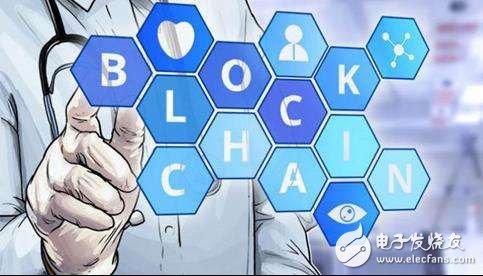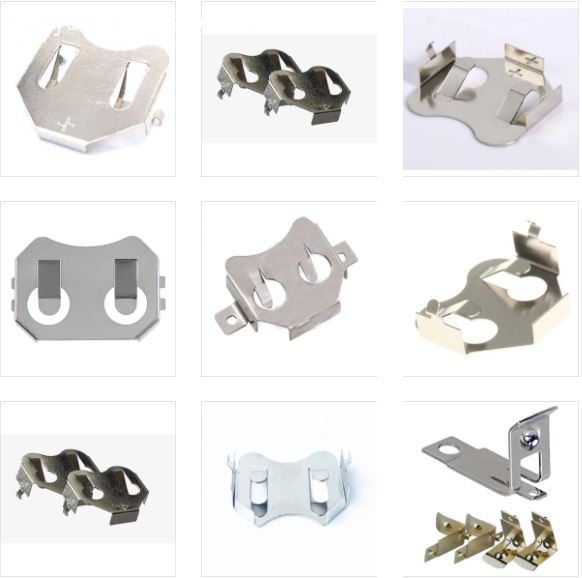Compiled according to the Firecoin Blockchain Application Institute: Blockchain technology ensures the safe exchange of patient data, improves clinical trials and drug traceability, and reduces network operating costs.
These are just some of the potential drivers of global healthcare, and the widespread use of blockchain technology is still in the cradle, but it also brings hope to the industry.
Bitcoin-guided cryptocurrencies use many of the most promising applications of cutting-edge technology and gradually make the market feel the presence of some small but different applications.
Blockchain uses large amounts of data through distributed ledger technology, allowing for the security, tampering and transparent sharing of virtually any form of information.

This concept has recently caught the attention of Forbes magazine, which says "it seems that the blockchain will have an impact on almost all industries."
At present, blockchain technology has gradually expanded from financial and network security to logistics, from agricultural enterprises to air transportation energy. As far as the health sector is concerned, some pilot projects have been screening data with the goal of ensuring the safety of the medical system and managing the patient's digital files.
French pharmaceutical giant Sanofi said in a recent report: "Blockchain technology has been used for pilot health data analysis, medical device security and electronic medical record. "In addition, there is a technology that applies to all The potential of the field ranges from more effective clinical trials and faster new therapy approvals to reducing counterfeit drugs and increasing cost transparency. â€
In the United States, IBM Watson Health has been working with the US Food and Drug Administration's food safety agencies to propose a seamless and secure health data exchange system based on blockchain.
IBM Watson Health also works with the Centers for Disease Control and Prevention (CDCs) to determine how blockchain can facilitate secure data exchange.
The idea was to use the blockchain platform to analyze data through cognitive computing and improve epidemiological responses to the 2014 health crisis, when the Centers for Disease Control and Prevention were critical of the four Ebola cases identified by US laboratories. .
IBM currently claims that "about 80% of the health data currently applied to the system network is invisible because it is unstructured."
In Europe, the blockchain model used by MyHealthMyData is compatible with the strict new EU privacy laws in force in online personal data protection last month.
MyHealthMyData coordinator David Manset told AFP. “We only connect information in the blockchain, not just the information itself.â€
Manset continues: “MyHealthMyData is funded by the European Union for 3.5 million euros ($3.8 million). Its partners include Siemens, Germany, to help prioritize health data and easily share clinical trial data. Task management currently accounts for approximately 80%. Researcher time."
In addition, the right to process data (the right to erase digital information tracking) must be balanced with the main selling points and release efficiency advantages that cannot be tampered with in the blockchain.
According to Deloitte's data, some assessment reports in the United States believe that the potential benefits are not only in the market that reduces administrative and operational waste by hundreds of billions of dollars. In 2017, global spending exceeded $3 trillion, and by 2020 it is expected to reach 8.7. Trillions of dollars.
MyHealthMyData shows that if someone wants to completely erase their data, the link to the information may not be available without causing actual interruptions in the chain.
Manset explained: "We believe that the blockchain supports third-party trust."
But Anca Petre, co-founder of 23 ConsulTIng, which focuses on the potential of blockchain health, believes that large-scale industry adoption takes time, given the sensitivity of the data.
“To do this, we must provide 100% digital data and software interoperability for all parties,†Petre told AFP, which is not exactly the same as the current situation.
Luca Comparini, who is in charge of the IBM blockchain in France, admits: "The first problem is to get everyone involved, it takes time."
Petre is very dull. She told AFP at the Vivatech salon in Paris, France: “The blockchain is the cherry on the cake, but first you need the cake.â€
Coin/Button Cell-retainers And Contacts
Antenk coin cell battery retainers Designed for memory back-up and stand-by applications, these contacts permit quick and easy coin cell replacement and installation. Eliminating "soldered-in" cells, computer, video, telecommunication and similar PCB based product users now have a reliable, "no tools required" method for changing batteries.
Extremely economical, these retainer contacts are available in surface mount (SMT) or thru hole mount (THM) styles for 4.8mm, 6.8mm, 11.6mm,12mm, 16mm, 20mm, 23mm and 24mm coin cells. The THM version has stable mounting legs for excellent board retention during wave solder. The SMT version includes a unique solder tail "flow-hole" design to bolster reflow and strengthen solder joints. They are manufactured from phosphor bronze, precision stamped and are plated with either a high luster nickel finish or matte tin finish ideal for low temperature soldering enviornments. Both feature dual spring contacts to assure reliable connections and a low contact resistance.
Antenk Coin/Button Cell-retainers And Contacts

Coin cell retainers are simple metal contacts that both electrically connect coin cells and hold them in place, while taking up minimal additional space on the PCB. They feature nickel-plating, and since most coin cells have nickel shells this helps to prevent galvanic corrosion, an electrochemical process that can damage dissimilar metals that are in electrical contact. Our retainers are always designed with automation in mind, and can be easily picked and placed, with both through hole and surface mount retainers available for most coin cell sizes. Combining the ease of automation with the low cost of Antenk's retainers, it is no wonder they are such a popular product.
Coin Cell, Button Cell, Retainers, Contacts
Designed for memory backup and standby applications, Antenk's compact coin cell battery retainers permit quick and easy coin cell replacement and installation. By eliminating soldered-in cells, computer, video, telecommunication, and similar PCB based product users now have a reliable, no tools required method for changing batteries.
These holders and retainers are available in surface-mount (SMT) or through-hole-mount (THM) styles for 4.8 mm to 24 mm coin cells. The THM version has stable mounting legs for excellent board retention during wave soldering. The SMT version includes a unique solder tail flow-holedesign to bolster reflow and strengthen solder joints. Both feature dual spring contacts to assure reliable connections and low contact resistance.
Coin Cell, Button Cell, Retainers, Contacts Features
Available in THM or SMT configurations
SMT solder tail with flow-hole design for increased joint strength
SMT solder tail located outside of retainer body which facilitates visual inspection of the solder joints
THM legs maintain relative position during and after soldering
Reliable spring tension assures low contact resistance
Retains battery securely to withstand shock and vibration
Ideally suited for high-density packaging
Ideal for low-profile space-saving PCB applications
Designed for reflow and all PCB soldering applications
Compatible with all wave and reflow operations
Compatible with most vacuum and mechanical, pick and place assembly systems
Matte-tin plate for lower soldering temperatures ideal where other temperature sensitive components are being used
Tin-nickel plated retainers are ideal for lead-free, high-temperature soldering applications
Retainers available for coin cell batteries from 4.8 mm to 24 mm diameter
Coin Cell Retainers by Size of Cell
191 | 335 | CR1025 | CR1216 | CR1220 | CR1225 | CR1632 | CR2016 | CR2032 | CR2320 | CR2325 | CR2330 | CR2354 | CR2430 | CR2450 | CR2477 | F3 iButton | F5 iButton | LR1120 | LR44 | ML414 | SR512SW | SR60 | V80H or CP1654 | BR1025 | BR1216 | BR1220 | BR1225 | BR1632 | BR2016 | BR2032 | BR2320 | BR2325 | BR2330 | BR2450 | BR2477 | Other Sizes
Button Contacts,Coin Cell Retainers And Contacts,Coin Cell Retainers
ShenZhen Antenk Electronics Co,Ltd , https://www.antenkwire.com